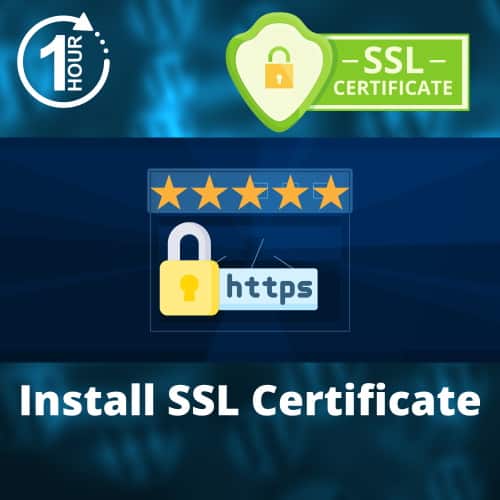WordPress is a content management system (CMS) that enables users to create a website or blog from a simple interface. Despite its simplicity, WordPress is a powerful tool that millions of people use daily.
Unfortunately, hackers target WordPress due to its popularity. If you’re using WordPress to power your website or blog, it’s important to take steps to secure your site.
Here are the top eight tips and techniques for WordPress site security:
1. Use SSL
Any WordPress site owner knows that security is a top priority. After all, a hacked website can result in lost data, decreased traffic, and even legal troubles. One way to help protect your WordPress site is to use SSL (Secure Sockets Layer).
SSL is a protocol that encrypts data sent between a web server and a browser, making it more difficult for hackers to intercept and tamper with the data. Most website owners hesitated from purchasing an SSL certificate in the past because it was considered too expensive.
Today, that’s no longer the case. There’s hosting on WordPress with free SSL. Therefore, there’s no excuse not to use SSL on your WordPress site.
2. Back Up Your Site Regularly
Another way to protect your site is to back it up regularly. This will allow you to restore your site if it’s hacked or infected with malware. There are many plugins available that can help you automate the backup process. However, choose a plugin that’s well-rated and backed by a reputable company.
Meanwhile, be sure to schedule backups at least once a week. And if possible, set up automatic backups to an external storage device such as a hard drive or cloud storage. Taking these precautions can help ensure that your WordPress site remains safe and secure.
3. Build A Safe Foundation With A Trustworthy Host
Your hosting company is usually the first line of defense against attacks on your WordPress site. That’s why choosing a hosting company that takes security seriously is important. When considering a hosting company, look for one that offers secure hosting options.
Pressable, for example, offers secure WordPress hosting with malware scanning and removal, firewalls, and more. Therefore, don’t skimp on hosting when it comes to protecting your WordPress site. Choose a quality host that can provide a secure foundation for your site.
4. Update Your Themes And Plugins
One of the most important things you can do to keep your WordPress site secure is to ensure your themes and plugins are always up to date. Outdated software is one of the biggest security risks for any website, including WordPress.
By keeping your themes and plugins up to date, you’ll ensure that your site uses the latest security features and is less likely to be exploited by hackers.
5. Limit User Permissions
WordPress security can also be improved by limiting user access to a minimal number of roles. This means you should only grant users the permissions they need to perform their specific tasks.
For example, if you have a contributor who only needs to write articles, there’s no need to give them access to change your site’s theme or settings. By carefully controlling user permissions, you can help reduce the risk of your site being hacked.
6. Use Strong Passwords And Two-Factor Authentication
Another way to help keep your WordPress site secure is to use strong passwords and two-factor authentication. A strong password is at least eight characters long and includes a mix of upper and lowercase letters, numbers, and symbols.
Meanwhile, additional security is provided for two-factor authentication by requiring a second factor, such as a code sent to your mobile phone, to log into your account.
7. Limit Login Attempts
One of the most common ways hackers gain access to WordPress sites is by brute force attacks. This is where a hacker tries to guess your username and password by repeatedly entering different combinations of words, numbers, and symbols. You can help protect your site from brute force attacks by limiting the number of login attempts allowed.
8. Install A Firewall
A firewall is a piece of software that helps to protect your website from attacks. It works by blocking incoming traffic from known malicious IP addresses.
Many different WordPress firewalls are available, and choosing the right one for your site will depend on your needs and budget. Fortunately, all firewalls share the same basic goal of keeping your site safe from attack.
Conclusion
Keeping your WordPress site secure is important if you want to protect your business and customers. Following the tips and techniques in this article can help ensure that your site is safe from attack.
However, always remember that security is an ongoing process. Be sure to stay up to date on the latest WordPress security news and make changes to your site as needed to keep your site safe.




